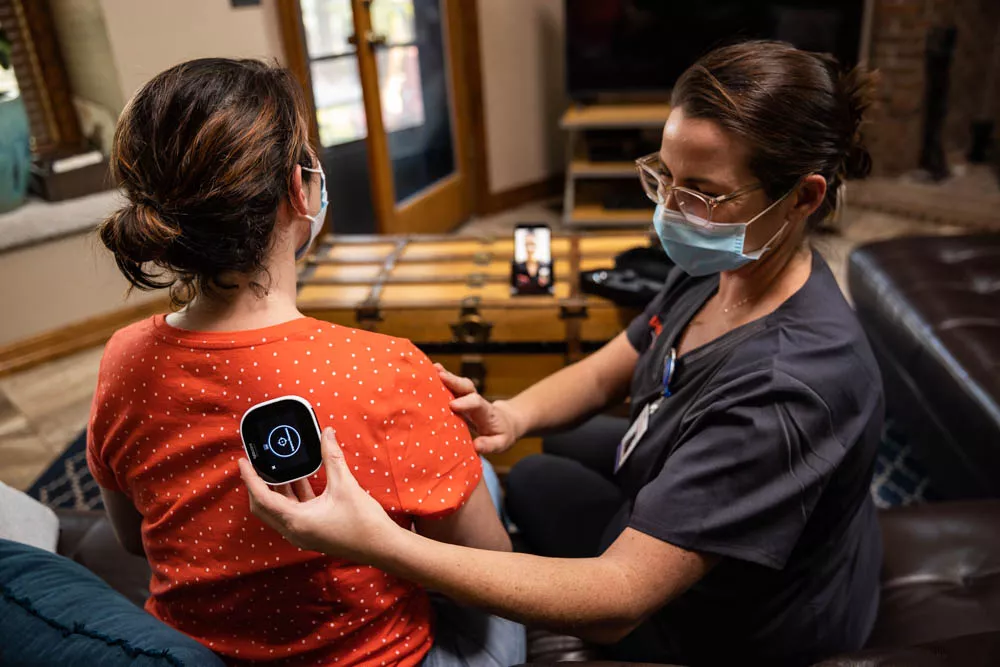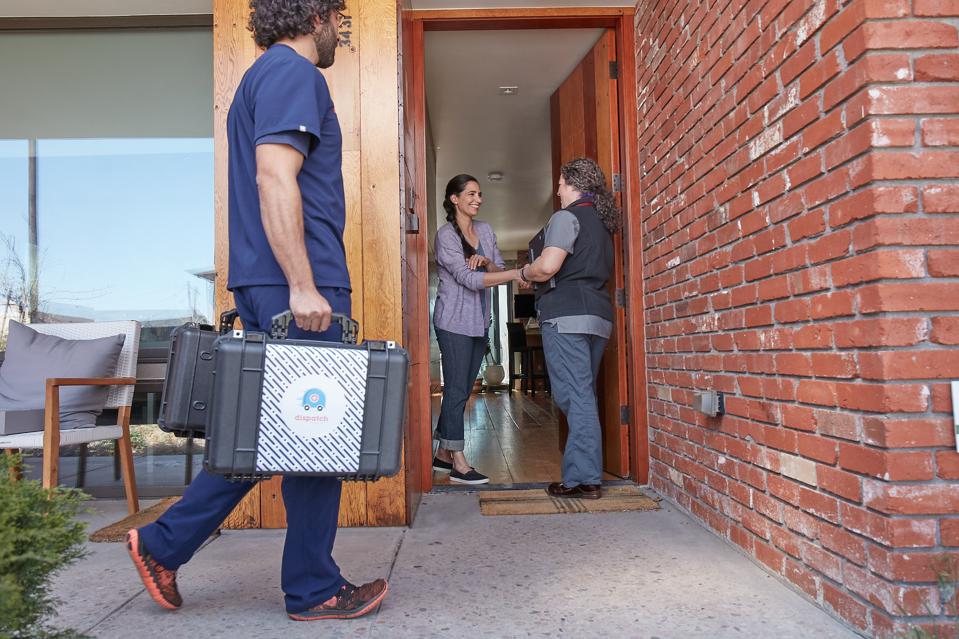Bringing Urgent Care into the Home: An Interview with DispatchHealth®
.png)
In 2013, emergency room physician Dr. Mark Prather and physician assistant Kevin Riddleberger joined forces to create the most extensive in-home health care system. Their model was rooted in a mission to provide better patient and provider experiences while simultaneously lowering health care costs.
Since 2013, DispatchHealth has become one of the leading and most recognizable home health care models delivering on-demand acute care for all ages.
Continuing our Care at Home series, we interviewed DispatchHealth’s Chief Development Officer, Jennifer Meyer, to further explore the value of home-based care models. Part one of our interview discusses how Dispatch’s unique platform is improving patient experiences while addressing health equity and advancing care in communities that have been historically underserved.
What is DispatchHealth and what problem are you trying to solve?
"Our country spends $4 trillion on health care, and traditional, facility-based care makes up one-third of that spending — ER visits, hospitalizations, and post-acute stays. Today, a significant portion of care can be delivered safely at home for a fraction of the cost, and the outcomes are often better. Specifically for seniors, it is highly efficient to intervene in the house.
DispatchHealth is building the world's most extensive in-home care system. We offer on-demand acute care and an advanced level of medical care for people of all ages – we bring the hospital's power to the comfort of the home.
Since our founding in 2013, DispatchHealth has scaled its proven clinical model to offer complex home-based medical care, including mobile imaging, in 34 states and 59 markets, and contracting with multiple health plans to cover over 150 million lives."
Exploring DispatchHealth’s Operating Platform

To assess the sporadic arrival cadence of a typical emergency room environment, DispatchHealth built a one-of-a-kind operating platform.
"Our technology is one of a kind. When we started in 2013, we knew we would need a custom platform built for the random arrival pattern you typically see in an emergency room.
First, our technology assesses the acuity of care. Then optimizes for distance and traffic and identifying the gravity of the illness- all doing so safely.
Then, on the location of our patient’s home, medical teams arrive equipped with necessary tools and treatments to treat everything from common to complex injuries and illnesses, including on-site diagnostics and CLIA (Clinical Laboratory Improvement Act)-certified lab.
We bring a medical technician into the patient’s home and with excellent tools, facilitate a Nurse Practitioner (NP) or a Physician Associate (PA) joining virtually. Our innovative technology allows us to see inside someone’s ears and throat and listen to their lungs and heart.
We continually look to add services and technologies that improve our care models. As an example, in 2021 we acquired two mobile diagnostic businesses that are now integrated with our care model so that our patients and providers always receive their imaging study within a timeframe that meets their needs. The landscape of the in-home care model is ever evolving but at DispatchHealth we are focused on staying ahead of the industry to bring our proven care model to patients across the country."
In-home, high acuity care allows patients to receive health care services within the comfort of their own home while generating significant savings to themselves, their families and stakeholders across the industry. Since its inception in 2013, DispatchHealth has served over 625,000 patients and is on track to save the industry more than $2 billion in medical costs by 2023.
Throughout the COVID-19 pandemic, patients and health care stakeholders were open to adopting new care delivery models to continue providing care and save hospital beds for the most critically ill patients. Although this model has increased in adoption and popularity since the pandemic, the model can be relatively new to patients especially for those unaware a model like this exists.
How do you ensure patients know your service is an option?
"During the pandemic, we saw patients become more open to new care delivery methods, in-home, high acuity care can still feel novel to some. As such, we work to ensure patients in the communities we serve know that they do not need to leave home to receive high-quality care. We believe we can best connect with patients through real stories to show how we provide the care they need, when they need it."
How do you navigate when a patient needs to be admitted to the ER after you have already arrived?
"We have a detailed screening process ahead of any visits to direct those patients who need emergency room level care in that direction. However, it’s not uncommon to get to a home and realize someone needs a higher level of care, and we help coordinate the transport to get them where they need to be. One thing we often noticed during the pandemic among seniors, in particular, was a reluctance to go to the emergency room. Having our teams there in person helped alleviate concerns and, in some cases, insisting that the ER is where they belong was the added push to get the patient where they need to be for optimal care."
Dismantling Barriers & Advancing Health Equity

Since care is being delivered within the convenience and comfort of the patient’s home, home-based care models can also be better equipped to address health equity and reach patients that have been historically underserved. DispatchHealth has provided care to patients of all ages and socio-economic background providing care to patients in need, when they need it.
How is DispatchHealth addressing health equity and helping communities who have been historically underserved?
"Because we serve patients in their environment, DispatchHealth is able to connect with an underserved population who have traditionally struggled with access to quality care – could be mobility issues, lack of child or elder care, or the fear of being turned away.
By bringing care to patients’ homes, we are removing those big or small obstacles to receiving care. Additionally, access to quality healthcare in the rural setting can be challenging and DispatchHealth is working to combat this issue. We have been experimenting for the past year with an asset-light model that leverages more virtual care, and the results have been compelling. We strive to make our health care model focused on bringing the right type of care available to all types of patients in all geographies, and this extension of our services will go a long way towards achieving our goal.
DispatchHealth was built on the principle that everyone deserves access to high-quality healthcare. We have delivered over 625,000 patient encounters since the inception of the organization delivering care to all ages and all socio-economic populations driving improved access and health equity. By bringing care to patients in their homes, DispatchHealth is focused on removing the many obstacles and barriers an average patient might face trying to access the care they need, when they need it."
Next week, we will release part two of our interview featuring Co-Founder and Chief Strategy Officer, Kevin Riddleberger, where we explore how DispatchHealth is navigating the current workforce challenges the industry is experiencing and what policies need to be enacted to promote the adoption of home-based care models

